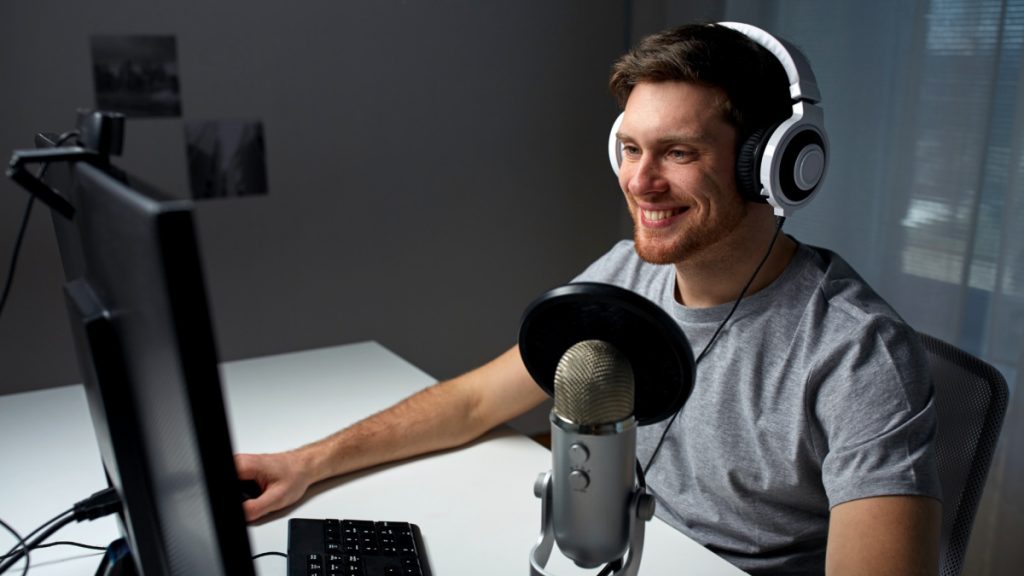Acing that Video Conference or Livestream — An Actor’s Take
05/28/2021
By Shelby Rowe Moyer
A lot happens when you walk into a room to give a presentation, says Clare Haden, a Madison-based professional actor and vocal coach.
Before you even speak, the audience is visually scanning your body language for cues that help them form an opinion about how comfortable and confident you are — or if you seem nervous and distracted. This 10- to 20-second analysis is formed when we meet someone for an interview, speak up at a meeting or stand in front of a crowd at an event.
In other words, first impressions are important.
“But that’s so much harder to do when you’re on a video screen,” Haden says. “You can’t see the whole picture and it’s harder to read those cues in a video. You have to work very hard to make sure your facial expressions are conveying what you want to send out. And we have a lot of vocal variety, so you’re constantly listening for those cues as well.”
Last summer, Haden taught Acting Skills for Life — a class that teaches techniques for stronger communication and public speaking — at the University of Wisconsin- Madison. The course drew students and professionals wanting to sharpen their verbal bravado from every industry. Aside from the typical activities that teach students how to carry themselves, and be aware of their tone and delivery, the class was also a crash course on translating these skills to video.
Engage Your Audience
Eye contact is particularly important when delivering a message on video. Viewers are going to be focused on your face and breaking eye contact can disengage them. If you’re someone who uses hand gestures, continue to use them and be aware of your vocal tone. “People can perk up when there’s a dynamic shift with vocal energy,” Haden explains. So mix up the tempo of your message, as well as how you project or express your voice. Listen to experienced speakers, like Michelle Obama, she says, and dial in on how they use vocal expression to rope in a crowd.
Haden also recommends including some visuals to change up what viewers are seeing on camera, adding some personal stories into your talk and outlining the “why you should care” component early on. “They’ll hang out with you for the ride, but if you don’t build [the why] in early, then it’s a little easier to get distracted or not stay with you,” she says.
Create Your Own Energy
When speaking in front of a crowd, you can vibe off of, and get energy from, the audience’s reaction. On video, much of that disappears. Haden says she visualizes how she wants the audience to respond, which can help maintain confidence and momentum throughout the session. Or if you can see people’s faces, take note of their reactions. Be intentional about creating pauses in your talk, which give you a moment to take stock of the audience’s cues.
“It takes practice,” Haden says. “For people who have a big interview or a high-stakes situation, it’s not unheard of to conduct [a rehearsal] with friends or family. There’s so much value in being able to take the time to practice saying it out loud. That would be my biggest thing. Don’t go into it cold, without having practiced.”
Build Up Your Confidence
Before hopping on an important call, Haden says it helps her to know that she prepared. She takes some deep, nostril breaths and does some vocal warmups to ready herself. “You don’t think twice about an athlete or musician practicing every day,” she says. “You kind of have to do the same thing as a public speaker. You have to practice and get your mind in the right space.”
If you want to know how you come across on camera, record yourself speaking. It makes you much more aware of your facial expressions, body language and tone.
Another exercise Haden finds helpful is to connect back to your core values. “Think about when you were really connected to that core value and you felt really good about yourself,” she says. “What were you wearing? Whom were you with? What did it smell like? Distill it down to six words and, a moment before you go into a difficult conversation or interview, focus on those six words. It connects you back to who you really are.”
Lastly, breathe. Yeah, yeah. Everyone says this. And there’s a reason for it. Most people get nervous before speaking, and your body can go into its primal fight-or-flight physiology, Haden says, which makes your breath shallow. Get a couple of deep, nostril breaths in to help not only support your vocals, but also calm your nerves.
Seek Additional Support
Toastmasters International is a great way to hone your speaking acumen. President of the Menomonee Falls chapter of Toastmasters Mark Person says members are meeting virtually. During meetings, members walk through difficulties they are experiencing before discussing techniques for prepared speeches — such as eye contact, audience engagement, speech structure and effectiveness.
With these tips and a little bit of practice, you, too, can translate your communication and public speaking skills into successful video and livestreams.











